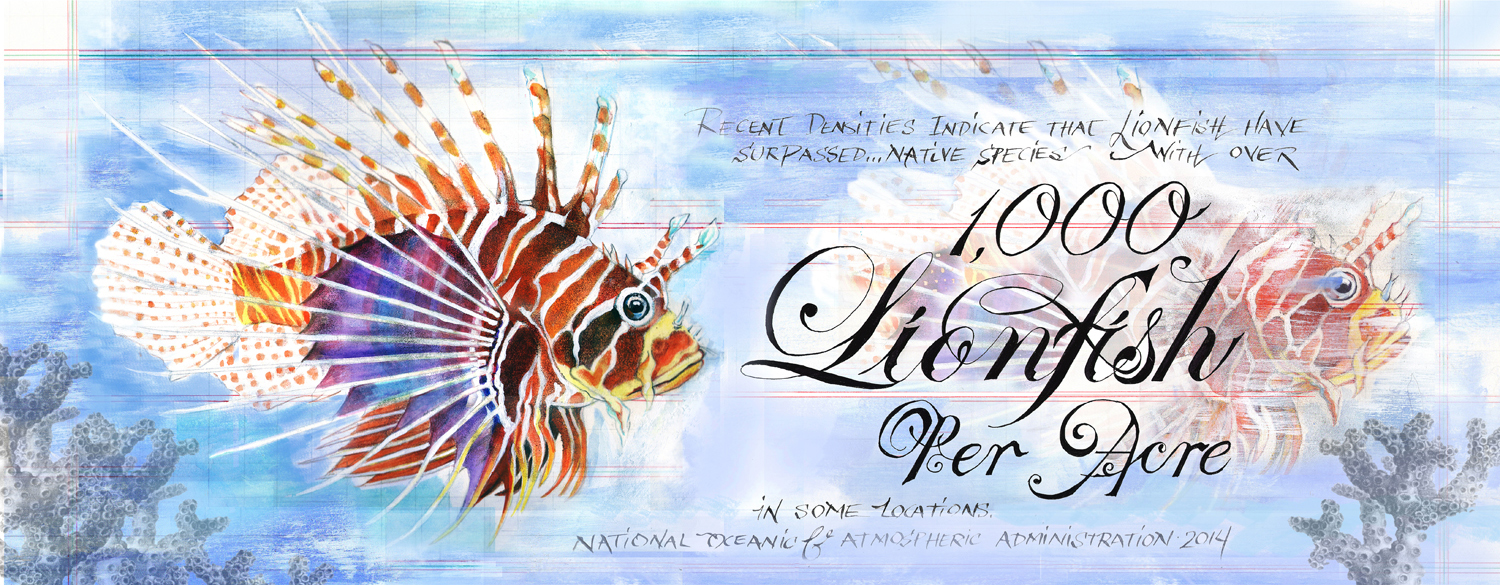INVASIVE SPECIEs: Ebb & flow series
2 of 4 Panels
Sea creatures live in neighborhoods which have evolved to be local and regional, not global. Our diverse New England sea-life community is under attack by invaders from all over the globe, brought to our waters via decades of shipping ballast dumping, unregulated release of aquarium pets, and mega-hurricanes resulting from climate change. Movements of ocean waters by man and nature are extending the northern range of these invasive creatures. Soon theremay truly be only One Ocean, with monotonous expanses of invasive monocultures, devoid of the variety of world seabiomes that have created such delicate creatures as the sea dragon.
Hence, the images are Romantic, “Darwinian” journal paintings in watercolor, with calligraphic text about the modern invasive marine species which are poised to Boston Harbor and Fort Point Channel in the 21st century. The paintings are intended to evoke a sense of discovery, and give the viewer the experience of natural history observation much like the drawings and paintings form the ages of European expansion. The lionfish is particularly charismatic, and many who first see them wild along the New England Coasts will find them fascinating. But beware-- those spines are poisonous, and they creating undersea deserts with their voracious appetities.
These are paintings of non-native invasive species are new to, or expected to soon invade, Boston Harbor and Fort Point Channel:
-- the Lionfish Pterois antennata (which is also on display at the New England Aquarium),
-- the Orange Striped Sea Anemone Diadumene lineata,
-- the Green Crab Carcinus maenas (which as food for other species at the New England Aquarium) and
-- the seaweed known as Dead Man’s Fingers or Sputnik Weed Codium fragile tomentosoides.
Modern quotes concerning the science and management of these species from the EPA (Environmental Protection
Agency), NOAA (National Ocean and Atmospheric Adminstration) and NEAQ (New England Aquarium) ARE be added into the artwork in a historic, calligraphic style. Additionally, I include quotes from great literature of this historical period whichinclude the words “ebb and flow,” a common term at the time for change.


